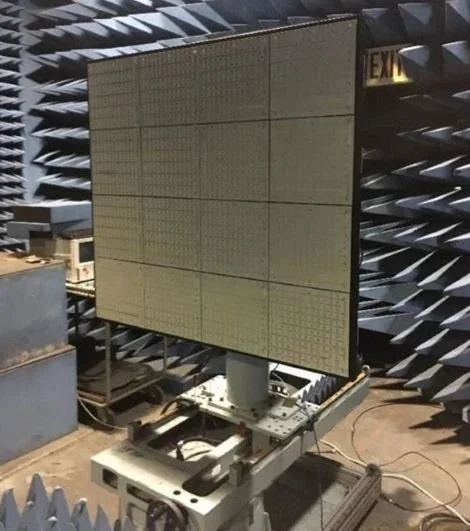Beaming Power as a Service: What AFRL’s Arachne and NRL’s PRAM Really Signal
Concept art of the U.S. Air Force Research Laboratory’s Arachne flight experiment on orbit.
Credit: AFRL
Defence-grade demos are the pragmatic on-ramp to commercial SBSP—and they point to how to sell it
If you want to see space-based solar power (SBSP) become bankable, watch the incremental defence experiments. The U.S. Air Force Research Laboratory’s SSPIDR programme and the U.S. Naval Research Laboratory’s PRAM work don’t promise city-scale power; they’re proving the blocks you must have before any utility will take a meeting. Just as importantly, they hint at a service model: guaranteed bursts of power to austere sites and disaster zones, sold with clear interfaces and SLAs.
Start with PRAM. In May 2020, NRL flew the Photovoltaic Radio-frequency Antenna Module on the Space Force’s X-37B to study how efficiently a sandwich tile converts sunlight to RF in orbit. NRL emphasised the scope: PRAM validated conversion hardware and thermal behaviour in space; it wasn’t a full “beam to Earth” link. The experiment stayed on-orbit for over a year, returning data that feeds real design curves for future transmitters. That may sound narrow—but it’s exactly how you derisk the stack: one subsystem at a time, under relevant conditions.
Next comes Arachne, the keystone flight for AFRL’s Space Solar Power Incremental Demonstrations and Research (SSPIDR). Arachne will fly a panel of nine sandwich tiles built by Northrop Grumman and aims to demonstrate end-to-end performance—collecting solar energy, converting it to RF, and beaming to a rectifying antenna on the ground from low Earth orbit. AFRL’s public materials point to an early-2025 launch window and place Arachne alongside SPINDLE, a deployables pathfinder, acknowledging that SBSP demands large, stowable structures we can reliably build and unfold in space.
Early SSPIDR demonstrations of space-to-earth power beaming focused on Rectenna demonstration, targeting high efficiency at low incident power densities.
Credit: Christopher T. Rodenbeck, et al.
Why is this commercially meaningful? Because defence is a natural first customer for a service that can deliver power to places where fuel logistics are risky or impossible. Arachne’s goal—prove a tile-to-rectenna link from orbit—maps directly to minimum viable services: short-duration power beaming windows to forward bases or emergency sites, scheduled like satellite passes. You don’t need grid-scale economics to sell that; you need assured power, safe link budgets, and operational simplicity for the receiving unit.
That logic lines up with wider economic work. NASA’s 2024 SBSP assessment concluded that large-scale, grid-competitive SBSP requires further gains (launch cost, cell efficiency, lifetime, servicing) but identified combinations that could make it viable. Defence and disaster-response niches don’t erase those challenges; they sidestep some by valuing availability and logistics over cents per kilowatt-hour. Early revenue here funds the learning curves that wider markets will later demand.
So what should vendors and investors look for as Arachne nears flight? Three things. (1) Measurable link performance—RF power at the rectenna, stability through thermal cycles, beam-forming quality. AFRL’s openness on test objectives is encouraging and gives outsiders a way to judge progress. (2) Packaging—turn the tech into a service kit: repeatable tiles, a ground rectenna pallet with safety interlocks, ops procedures, and telemetry that a commander can actually use. (3) Interfaces—publish spectrum assumptions and coordination templates so national regulators aren’t starting cold when pilots scale.
Risk narration has to be blunt. PRAM underscored conversion behaviour but didn’t close the Earth-link; Arachne must show an end-to-end demonstration and do it repeatedly. If it misses the mark, partial-credit still matters: you can sell results (tile efficiency data, thermal margins, deployment reliability) as paid inputs to the next design turn. AFRL has already paved a smart path by running SPINDLE in parallel for deployables; any commercial SBSP will live or die on assembly and stowage as much as on RF.
The go-to-market tone that lands is service, not spectacle. Offer “power-beaming windows” with defined start/stop times, safe-exposure envelopes, and on-site training. Bundle insurance-backed terms that define delivery (received energy thresholds), reflight rights, and incident reporting. Co-sell with satellite operators for access and with energy companies for ground handling. Keep each pilot small, heavily instrumented, and publicly reported—buyers in uniform, government and industry will fund what they can audit.
In short: PRAM proved a vital tile behaviour; Arachne aims to close the loop to ground. Together they sketch a credible first market for SBSP as a service. If the data holds up, the next contracts won’t be for “space power, someday,” but for scheduled beams that keep critical operations alive when nothing else can. That’s how a grand idea turns into a line item that procurement can sign.

